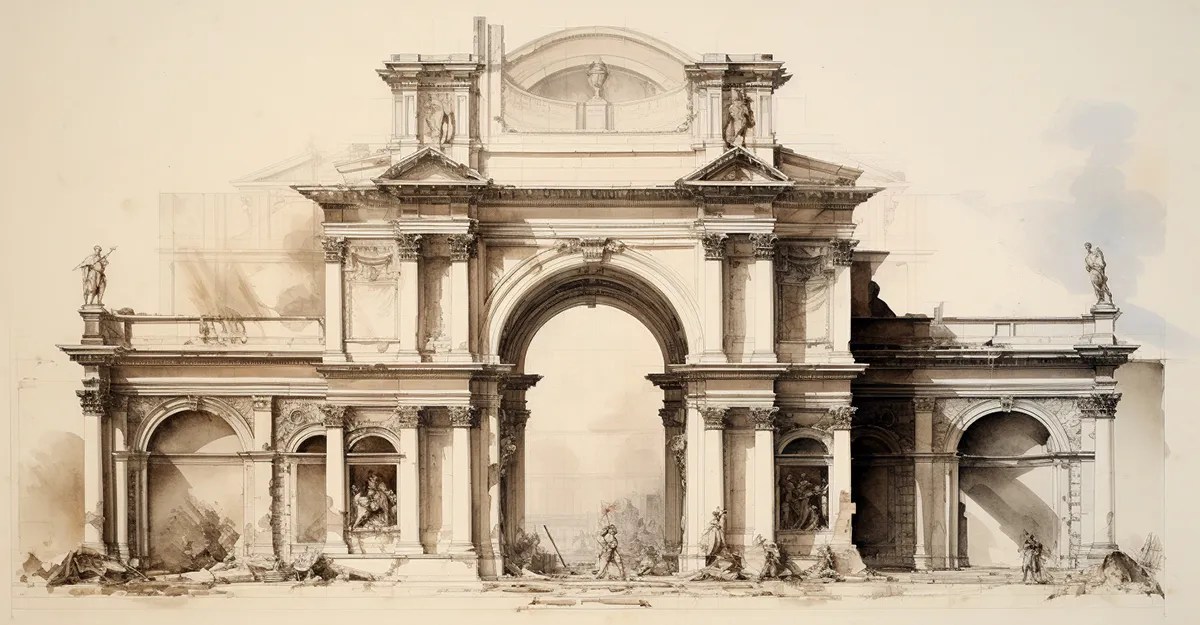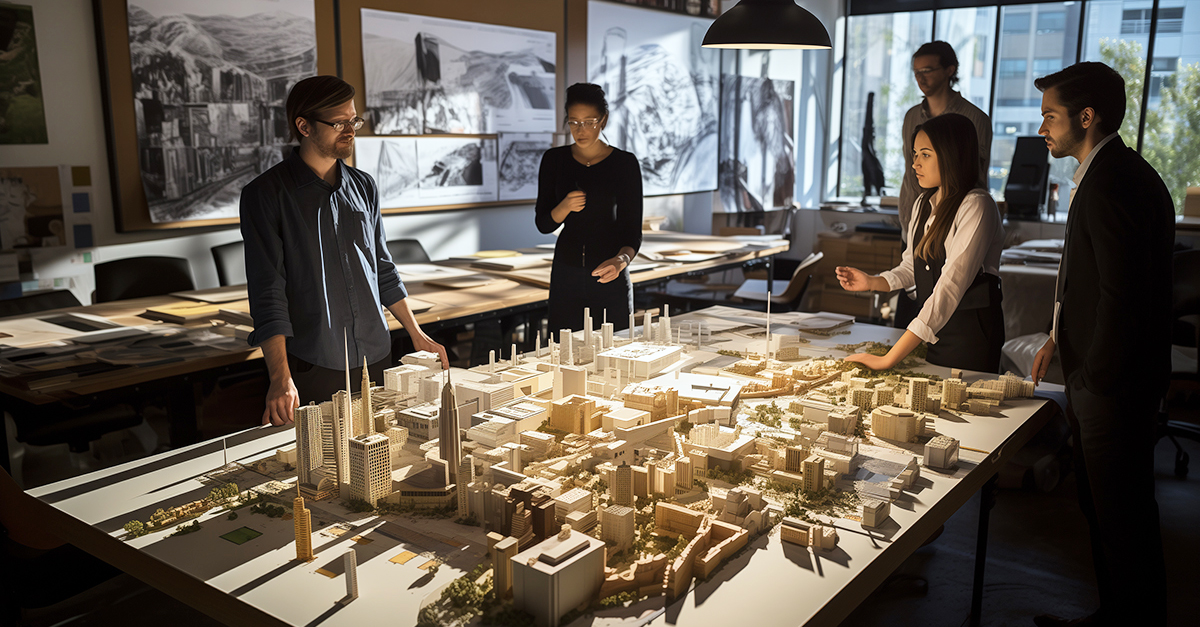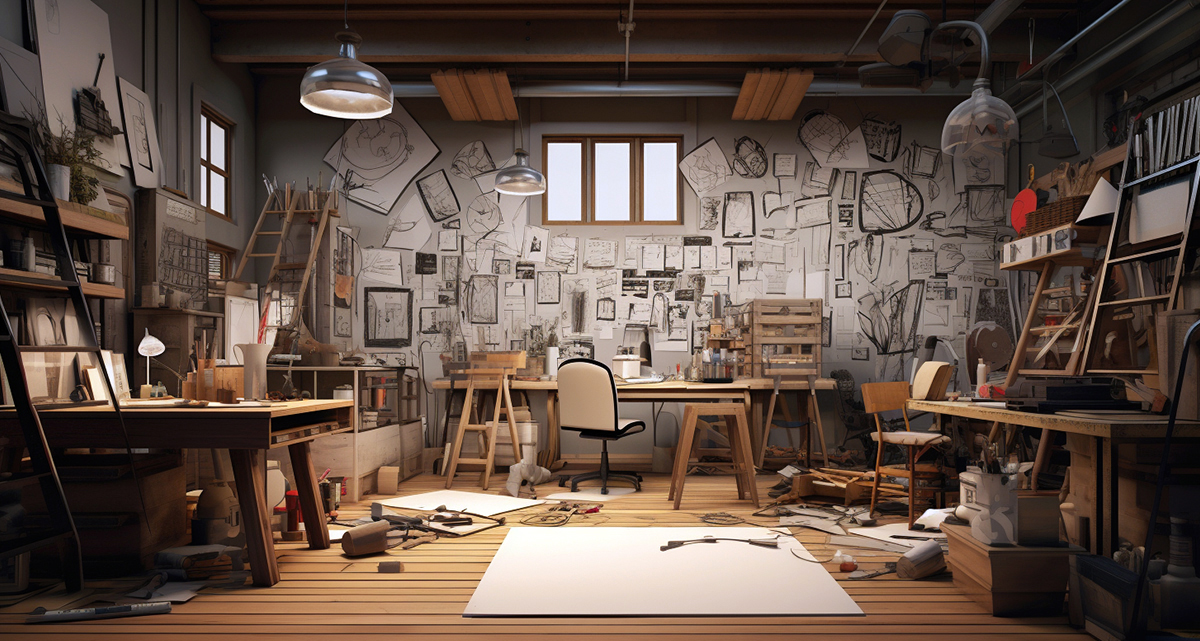Life in college for architecture students is remarkably predictable, and for those of us who have been through it, as unique or different as you think your experience was, you eventually come to realize that even though the process varies widely from program to program, at their core, they are almost fundamentally the same in their format. Is this a bad thing? Are there changes that we should be discussing? … Welcome to Episode 137: Is Architecture School Broken?
[Note: If you are reading this via email, click here to access the on-site audio player] Podcast: Embed Subscribe: Apple Podcasts | Spotify | Android | iHeartRadio | TuneIn
Today Andrew and I are going to tackle a topic that has been on our list of show topics for almost 3 years. If I were a betting man, I feel confident that you get a handful of architects sitting around a table talking with one another, eventually, the topic of architecture school and the classes we should have taken comes up. Shortly after Andrew joined the podcast back in November 2018 and we started talking about this topic as a potential show probably in November of 2018.
I think we are qualified to talk on this topic for a few reasons, other than we both went to and graduated from architecture school. I keep ½ of my pinky toe in academia as a member of the University of Texas School of Architecture Advisory Council, a position I have held since 2018. I should point out that I don’t really do anything, but I go to meetings a few times a year and receive updates on developments, objectives, and the general activities and goings-on at the school.
Andrew is firmly entrenched in academia as he lives it year-round.
… but let’s start our conversation back 150 years ago.
History of Architectural Education jump to 3:15
Over the past 150 years, architectural education in the United States has gone through several distinct educational movements and styles:
- Informal Apprenticeship (Mid-19th Century): Prior to the mid-19th century, architectural education was informal, with aspiring architects learning through apprenticeship under established practitioners.
- Emergence of Academic Institutions (Late 19th Century): The latter part of the 19th century saw the establishment of the first architectural schools and programs in the U.S., reflecting a growing recognition of the need for formal education in architecture.
- Beaux-Arts Influence (Late 19th – Early 20th Century): The Beaux-Arts style of education, inspired by the École des Beaux-Arts in France, became influential. It emphasized classical architectural principles, the atelier system, and rigorous training in design, history, and theory.
- Transition to Modernism (Early 20th Century): As the 20th century progressed, modernist and functionalist ideas gained prominence, challenging the classical focus of Beaux-Arts education. This marked a shift toward more functional, experimental, and innovative design approaches.
- Bauhaus Influence (Mid-20th Century): The Bauhaus movement, originating in Germany, had a significant impact on architectural education. It promoted the integration of art, craft, and technology and influenced American architectural pedagogy.
- Postmodernism and Beyond (Late 20th Century – Present): In the latter half of the 20th century and into the present day, architectural education has evolved to reflect a wide range of styles and movements. Postmodernism, sustainability, digital design, and interdisciplinary studies have all played a role in shaping contemporary architectural education.
The Boyer Report of 1996: “Building Community: A New Future for Architecture Education and Practice” was published and called for change in the architecture educational system. Even today, there are still many of the issues suggested in that report that the education system is struggling to achieve. This report had several “takeaways” that it offered as an improvement of the system of architectural education. Here is a short summary. It was actually an almost 200 page report/book. While this is still discussed in some academic circles, there are still portions of the recommendations in progress today, thirty years later.
Concerns/ Criticisms of the Current System jump to 24:10
It’s important to note that these criticisms are not universal, and different architectural programs may address these concerns to varying degrees. Many architecture schools are actively working to address these issues by revising their curricula, promoting diversity, and focusing on sustainability and practical skills. But many are also stuck in their traditional methodologies of teaching and remain steadfast in clinging to older ideologies. While they may institute new technologies to create work, the basis is still deeply rooted in the historical models of architectural education. Some of the most commonly cited issues are listed below.
- Lack of Practical Experience: Some argue that architectural education places too much emphasis on theoretical and design aspects, often at the expense of practical, hands-on experience. Graduates may not be adequately prepared for the practical challenges of the profession, including construction knowledge and project management skills.
- Overemphasis on Design Studio: While design studios are at the core of architectural education, some students and educators argue that they may be too dominant. This focus on design can sometimes neglect other crucial aspects of architecture, such as building technology, sustainable design, and professional practice.
- Lack of Diversity: The field of architecture has historically struggled with issues of diversity and inclusion. Critics argue that architectural education needs to do more to attract and support students from underrepresented backgrounds, ensuring a broader and more inclusive talent pool.
- Outdated Curricula: Some critics contend that architectural curricula have not kept pace with the rapidly changing technological and environmental landscape. They argue that the education system should better integrate digital tools, sustainable practices, and contemporary architectural theory.
- High Costs: The cost of architectural education, including tuition, materials, and equipment, can be substantial. This can create financial barriers for many students, limiting access to architectural programs.
- Narrow Definition of Success: Architectural education often places an emphasis on creating individual design “starchitects” and may not sufficiently recognize the diversity of career paths within the field, such as urban planning, historic preservation, or construction management.
- Disconnect from Real-World Practice: Some argue that there is a gap between what is taught in architectural education and the realities of professional practice. Students may find it challenging to translate academic design concepts into practical, code-compliant, and cost-effective solutions.
- Environmental Concerns: Critics argue that architectural education should place a greater emphasis on environmental sustainability, given the urgent need to address climate change. Some programs have been slow to integrate sustainable design principles and technologies.
- Inadequate Preparation for Licensing Exams: The education system may not adequately prepare students for the professional licensing exams required to become a registered architect. There can be a disconnect between what is taught in school and what is assessed in licensing exams.
- Limited Exposure to Practice: While design studios are essential, some students and educators argue that architectural education could benefit from more real-world exposure. This might include more practical, construction site experience, and engagement with clients and stakeholders.
- Inadequate Preparation for Changing Practice: Rapid technological advancements and shifts in architectural practice, such as the rise of sustainable and parametric design, have left some graduates feeling ill-equipped to address these changes in the workforce.
We were unable to discuss all of these in our conversation, but again it is critical to point out that the mileage on these will definitely vary based on the specific school. I think many schools, if not most, know that these issues exist and are attempting to address them. The truth is that architecture pedagogy is a big slow boat that could take a while to turn. In the meantime, many of these course corrections have been overcome by programs across the country. Also, it’s worth noting, that some schools may completely ignore these notions and hold steadfast to their ‘tried and true’ pedagogies.
Criticisms of the Studio-Based Learning method jump to 53:11
It would be fair to state that all architecture education happens in a studio-based environment. Of course, not all courses in architecture school are studio-based, but there is an overwhelming emphasis on design studios. Often they are the core of the academic pedagogy. But there are many criticisms of that system. It does have positive aspects, we will cover some in Part II, but the criticisms have been around for some time.
- Focus on Design to the Exclusion of Other Skills: Critics argue that the heavy emphasis on design in the studio model may overshadow the development of essential skills like project management, technical knowledge, construction, and regulatory understanding. This can lead to graduates who are well-versed in design but lack the practical skills required in the profession.
- Long Hours and Stress: The studio culture, with its long hours and high expectations, can create a stressful learning environment. Critics suggest that this can lead to burnout, negatively impacting students’ physical and mental well-being.
- Lack of Exposure to Real-World Practice: Some professionals argue that the studio-based model might not adequately prepare students for the realities of professional architectural practice, including dealing with clients, contractors, and code compliance.
- Limited Diversity in Design Approaches: A singular studio-based model may inadvertently promote a narrow set of design aesthetics or ideologies, potentially stifling creativity and innovation. Some argue that a more diverse range of teaching methodologies could encourage different design perspectives.
- Insufficient Integration of Technology: While the use of digital technology is on the rise, there are concerns that the traditional studio model may not fully integrate advanced digital tools and methodologies that are essential in contemporary practice.
- Lack of Accountability: Critics argue that the studio model can sometimes lack a clear framework for assessing student performance, making it challenging to ensure that students are meeting specific learning objectives.
While I don’t advocate for the deletion of design studios, it seems that it could be possible to modify the architecture education system to emphasize these less. Maybe it is actually a need to place more emphasis on the support courses and content or even those currently missing from the education that are ever-present in the profession.
Would you Rather jump to 64:33

As I was pondering how we would end today’s episode, trying to come up with another “hot dog finger” type question, I got to wondering “What do I enjoy doing and what would I NOT like to quit doing … in a purely PG-rated capacity.
I do a lot of audiobooks – probably cheating in some people’s opinion but I still use my imagination and I think it’s better than watching some tv show that probably isn’t very good. So …
Would you rather never have access to books, any books and in any capacity ever again, or never be able to cook from scratch?
Well, we came to in agreement on this one. Although, we both admit it was begrudgingly. The choice comes down to how we cannot really manage our current lifestyles by choosing one over the other. Is cooking for one crucial for the discussion? What about listening to books? How does that fall into the mix? If there is one thing Bob and I agree upon about this WYR question, it’s that both of the options are terrible. Neither one of us really wanted to make the choice. While I was able to come to mine fairly quickly, Bob took a bit more time to wrestle into his decision. In the end, we were both unhappy. Ha!
Ep 137: Is Architecture School Broken pt. 1
So as it turns out, this topic was more than we could contain in a single episode. This is partly due to my overzealousness in crafting the run sheet, but also due to the fact that there is much to discuss on this topic. It is a multi-faceted problem that covers a range of content. So we decided mid-episode to split this into two separate episodes. That seems to be a theme when we discuss architecture school. (See episodes 131 and 132). At this point, we can quite sum up the topic with a neat little bow. I am not quite certain we will ever be able to, but today we laid some of the groundwork for the conversation and began to dissect a few of the common criticisms of the architectural education process. This is not a call to demolish and restart the current education system, but more a call to rigorously evaluate the current systems and find room for long-needed improvements. I am of the opinion that somewhere out there is the proper balance of theory and pragmatism, pedagogy and practice, and ideas and skills that can set architecture on the correct path. While this one may seem to be negative at the moment, it will be clarified and touch on the positive aspects of this education in the concluding episode. I hope you will join us for Part II.
Until next time,

Special thanks to Construction Specialties – they are so focused on the importance of helping the architects achieve their creative vision, that they have created a CEU academy with multiple courses concerning facade design. These courses are each worth 1 AIA LU or 1 IDCEC CEU/HSW. Visit masteringmovement.net to take this and other courses.




